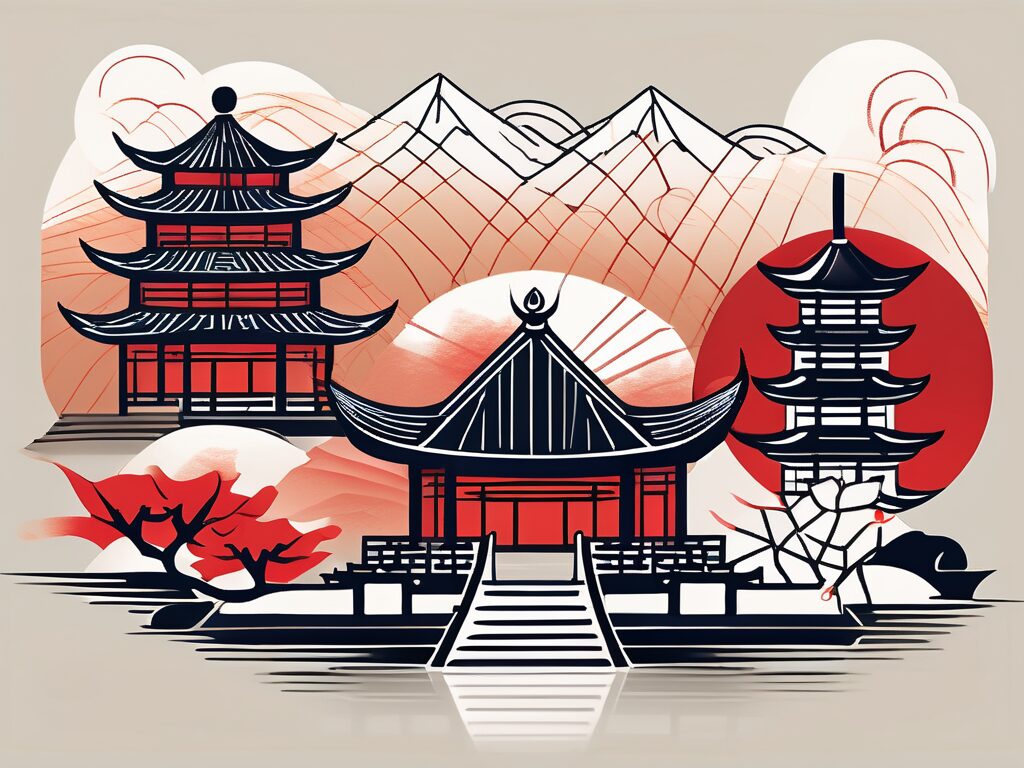China, with its rich history and diverse culture, offers a plethora of approaches to the study of arts and humanities. The country’s vast landscape is a canvas painted with the strokes of various art forms, philosophies, and cultural practices. In this exploration, we’ll delve into four distinct approaches to understanding and appreciating China’s arts and humanities.
Historical Approach
The historical approach is a time-honoured method of studying arts and humanities. This approach delves into the past, tracing the origins and evolution of different art forms and cultural practices. In the context of China, this approach is particularly fascinating due to the country’s long and storied history.
From the ancient dynasties to the modern People’s Republic, each era has left its indelible mark on China’s cultural landscape. For instance, the Tang dynasty is renowned for its poetry, while the Ming dynasty is celebrated for its porcelain and architecture. By studying these historical periods, we can gain a deeper understanding of Chinese arts and humanities.
The Role of Archaeology
Archaeology plays a crucial role in the historical approach. Excavations across China have unearthed a wealth of artefacts, from ancient pottery to intricate bronzes. These discoveries provide tangible evidence of China’s artistic and cultural past, offering invaluable insights into historical practices and aesthetics.
For example, the Terracotta Army discovered in Xi’an offers a glimpse into the grandeur of the Qin dynasty. Similarly, the Dunhuang manuscripts reveal a wealth of information about religious, literary, and artistic practices during the Tang dynasty. Such archaeological findings enrich our understanding of China’s historical approach to arts and humanities.
Philosophical Approach
The philosophical approach to arts and humanities focuses on the ideas and beliefs that underpin artistic and cultural practices. In China, this approach is deeply intertwined with the country’s philosophical traditions, such as Confucianism, Taoism, and Buddhism.
These philosophies have profoundly influenced Chinese arts and humanities, shaping everything from literature and painting to music and architecture. For instance, the Taoist philosophy of harmony with nature is reflected in traditional Chinese landscape painting, while Confucian values are evident in classical Chinese literature.
Interplay of Philosophy and Art
The interplay between philosophy and art in China is a fascinating area of study. It’s like looking at two sides of the same coin, where philosophy provides the conceptual framework, and art offers the aesthetic expression. This symbiotic relationship enhances our appreciation of Chinese arts and humanities.
Take, for example, the Chinese garden. It’s not just a space for plants and pavilions, but a philosophical representation of harmony and balance. The careful arrangement of rocks, water, and plants embodies the Taoist principle of ‘yin and yang’, creating a miniature cosmos that mirrors the natural world. This philosophical approach deepens our understanding of the artistic intent and cultural significance behind such creations.
Sociocultural Approach
The sociocultural approach to arts and humanities examines the social and cultural contexts in which art forms and cultural practices emerge and evolve. This approach is particularly relevant in China, where art and culture are deeply embedded in social life.
From the communal rituals of folk religion to the social commentary in contemporary cinema, Chinese arts and humanities are a reflection of the society they originate from. By studying these sociocultural contexts, we can gain a richer understanding of Chinese arts and humanities.
Role of Festivals
Festivals play a significant role in the sociocultural approach to arts and humanities in China. They are a vibrant showcase of Chinese culture, featuring a variety of art forms and cultural practices. From the dragon dances of the Spring Festival to the lantern displays of the Mid-Autumn Festival, these celebrations offer a window into the sociocultural aspects of Chinese arts and humanities.
Moreover, festivals are a communal affair, bringing people together in shared celebration. This social aspect adds another layer to our understanding of Chinese arts and humanities, highlighting their role in fostering community and continuity.
Comparative Approach
The comparative approach to arts and humanities involves comparing and contrasting different art forms and cultural practices. This approach can be particularly enlightening in the context of China, given the country’s regional diversity and global influence.
By comparing different regional styles, such as Cantonese opera and Peking opera, we can appreciate the diversity within Chinese arts and humanities. Similarly, by comparing Chinese art forms with those of other cultures, we can understand their unique characteristics and global impact.
East Meets West
The meeting of Eastern and Western cultures offers fertile ground for the comparative approach. From the fusion of Chinese and Western styles in contemporary art to the influence of Chinese philosophy on Western thinkers, these cross-cultural exchanges enrich our understanding of Chinese arts and humanities.
For instance, the popularity of Chinese martial arts films in the West has sparked interest in Chinese culture and philosophy. Similarly, the incorporation of Chinese elements in Western fashion and design reflects the global appeal of Chinese aesthetics. These examples highlight the value of the comparative approach in exploring the breadth and depth of Chinese arts and humanities.
In conclusion, the historical, philosophical, sociocultural, and comparative approaches offer diverse perspectives on Chinese arts and humanities. By exploring these approaches, we can gain a comprehensive understanding of China’s rich cultural tapestry and appreciate the beauty and wisdom it has to offer.
Enhance Your Teaching Career with a Global Perspective
As you explore the multifaceted world of Chinese arts and humanities, consider the impact that a deeper understanding of global education systems could have on your teaching career. IPGCE offers an International Postgraduate Certificate in Education that not only prepares you for the international classroom but also propels your professional development. With our program, you’ll join a vibrant community of educators, increase your chances for career advancement, and enjoy the flexibility of balancing study with your current commitments. Don’t let inadequate qualifications limit your potential. Join the UK’s #1 Teacher Training Course today and weave the richness of global arts and humanities into your professional tapestry.

